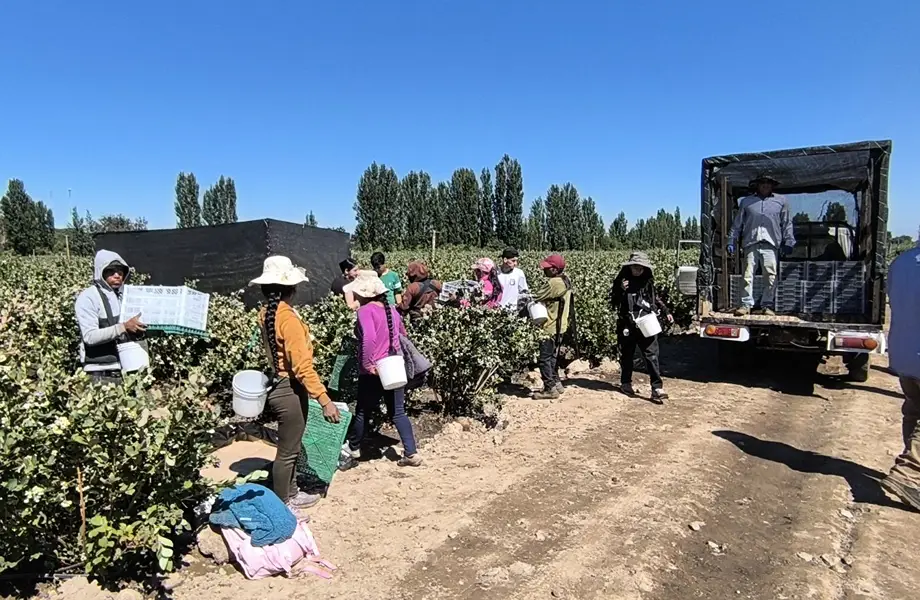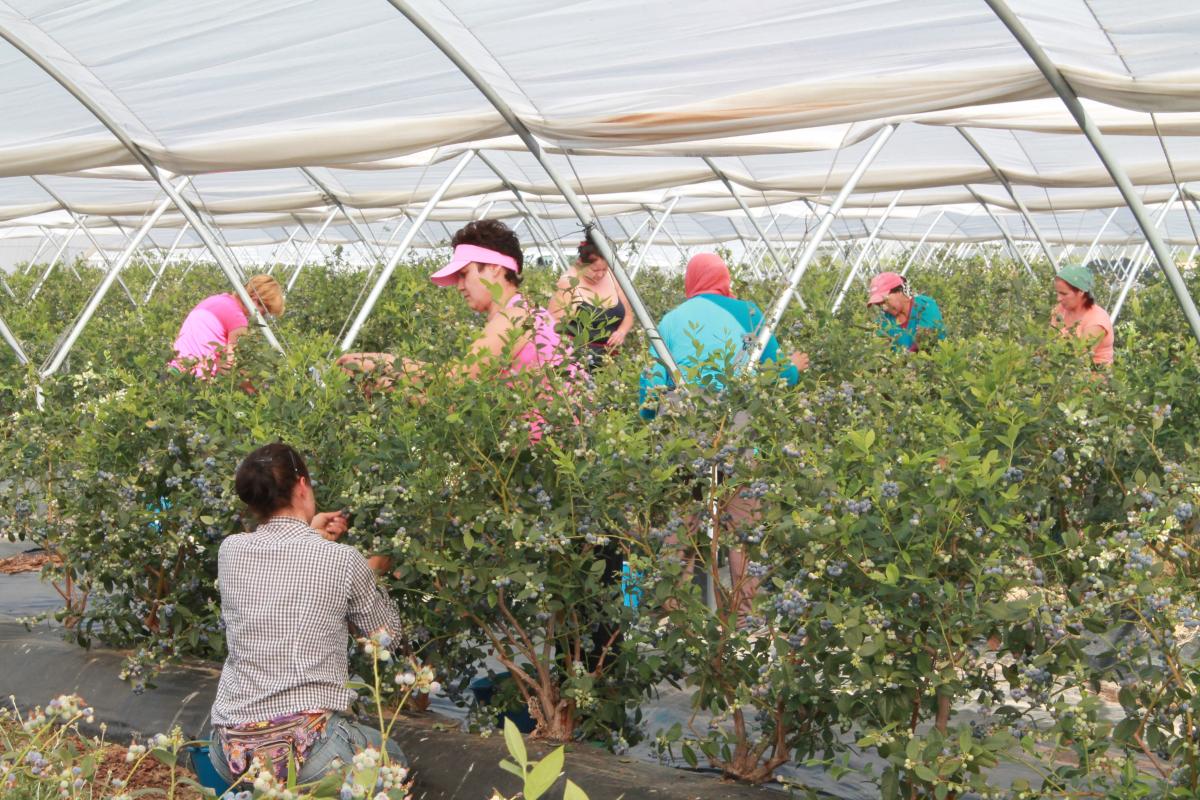The first day of the Canadian Haskap Symposium is behind us. The event, organised by CRAAQ, was scheduled for two Wednesdays - 20 and 27 October. During the first block there were several interesting talks. One of them was delivered jointly by Alena Chernenko from Severnyi Sad and Artem Sorokin from the Russian Kamchatka Berry Growers Association. It was about the conditions of the haskap (or Siberian or Kamchatka blueberry ) berry industry in Russia.

Variety 'Chulymskaja 
Variety 'Narymskaja 
Variety 'Tomiczka
INSTALLATIONS IN DIFFERENT PARTS OF THE RUSSIAN FEDERATION
The Kamchatka berry is cultivated in various parts of the country, mainly in the west, south and east. "As a result of breeding programmes in Russia, there are already 123 items in the list of official varieties. Some of them, mainly from Bakchar, are useful for commercial crops. Some are dedicated only to sowing in home gardens. A problem in the European part of Russia for many of them is the too short period of winter sleep. The long and warm autumns cause the flowers to appear on the bushes during winter, which in turn leads to the loss of part of the potential harvest in the next season,' said A. Sorokin in the introduction.

SEEDLINGS FROM POLAND ARE VERY POPULAR
He informed that the planting material on which the plantations are established comes mainly from indigenous nurseries. In vitro seedlings are particularly desirable, but the domestic market is not able to supply enough. That is why they are imported from Poland, mainly from Plantin. The area of Haskap in Russia is constantly growing. In 2020, thanks to the government's aid programme, blueberries was already growing on an area of 745 hectares. The obstacles to further growth are fear of crop management, especially in the west of the country. The selection of varieties has also not always been correct: some plantations have to be renewed according to creations that are more useful for commercial production. Another problem is access to specialist knowledge in agrotechnics. The area of berry trees is very diverse, ranging from 1 ha to 100 ha.
WHAT DO THE RUSSIANS DO WITH FRUIT?

Part of the production is for internal processing: mainly jams and juices are produced. The remaining Siberian blueberries are sold on the open market and some are frozen and sold throughout the year. The range of products based on Haskap in Russia is very wide. This species has been present in the country and in consumers' consciousness for many years. However, it is more common in the Asian part of the Russian Federation.
A. Sorokin also informed about quite successful attempts to cooperate in the sale of fresh fruit in the shops of large retail chains. In turn, A. Chernenko spoke about successful attempts to transport fresh fruit from Tomsk to Moscow and other locations several thousand kilometres away in the Russian Federation. However, logistical processes, in particular maintaining a uniform temperature during the transport period, are quite difficult and damage to the fruit is common. In order to popularise the consumption of haskap berries and secure the local market, some growers organise self-harvesting and planting events, during which consumers can try the berries and preparations made from them. Promotion of these fruits through social media is also used.
POLAND APPRECIATED AT CANADIAN HASKAP SYMPOSIUM
During the Canadian Haskap Symposium, topics related to the production of haskap berries and their use worldwide were discussed. It is worth noting that in most of the speeches, the speakers recognised the great importance of Poland in the global hierarchy of the Haskap industry. They appreciate the equipment produced by Polish engineering companies, the planting material and the quality of the fruit exported from Poland.Another prestigious brand is the International Kamchatka Conference, in which many symposium participants have participated in previous editions. This is the largest industry event in the world, organised by the publisher of the magazine 'Jagodnik', and will continue this year. Detailed information on this topic will soon be published on the pages of the http://www.jagodnik.pl portal.
Source: Jagodnik
Jagodnik is part of the global network of Italian Berry









